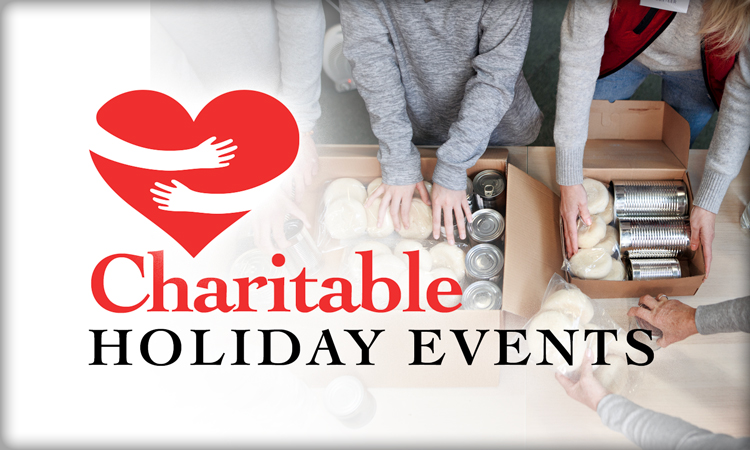Creator of digital platform meetingpages complete event planning directory and resource delivering leads and national, regional and local exposure for event venues, suppliers and destinations in MN, WI, IA & CO markets. In her free time, this 19 year industry veteran enjoys dance, group fitness, and training her young golden retriever dog in competition obedience and confirmation.
Charitable Holiday Events
As the holidays approach, people often look for ways to share their abundance with others. Recognizing this, non-profit and charitable organizations will often host holiday fundraisers in the hopes of maximizing donations and increasing awareness of their cause as well or align with companies looking to host a charitable holiday event. But exactly how does a planner go about doing that successfully? After all, the charity ball isn’t the company holiday party. Below we share some tips on how to host a successful charitable holiday event.
Q. What is the difference between planning a charitable event and a corporate or personal event?
A. Like corporate gatherings, charitable organizations have a message and a mission, as well as some of the same logistical issues in terms of wanting to be sure every guest is comfortable. And of course, some of the elements that you’ll find unique to a fundraising event include auctions and raffles. But the real difference is that as a charitable organization, if they miss the mark, it directly correlates to the organizations bottom line. Envision this — donors come in with a stack of $100 bills with the intent to donate some of them, but if the valet takes 20 minutes to park their car, the first thing they do when they arrive is talk to their friends about the slow valet line. That means their focus has shifted from the cause and the event, to an irritation. As a result, they may miss something that could have impacted their donation and some of that money may just remain in their pockets. As a planner, your mission is to maximize donations. In order to do that, you need seamless execution. The bottom line is less money goes to the mission if you have not planned for a seamless event.
Q. What is the first step a planner should take when planning a charitable event?
A. Know and be clear about the mission of the organization. What is the purpose of the event? Sometimes it’s fundraising, sometimes awareness, sometimes both. Know the goals of the evening or event before starting. Knowing the mission is critical to how the event should be created. It’s also important to focus more on mission than theme. Messaging for the evening comes through the mission. Then theme or decor or other event elements should be an illustration of that mission. Additionally, there can never be too many people on committees working toward your goal. When you plan a charitable event, you can never have enough people on the street, selling tickets, inviting friends, getting auction items, etc.
Q. Are there things that a planner should try to avoid?
A. Avoid the budget crisis that comes from not planning correctly. Control your expenses. It’s important to be cognizant of what you’re spending by planning wisely and appropriately for the event. Also, some planners have the expectation that because they’re planning a charitable event, suppliers should and will offer things for free. That just isn’t the case. What I tell my suppliers is, “We’re not looking for free, we’re looking for fair. Let’s work together on this.”
Q. What is your best advice for a planner who is planning his/her first charity event?
A. Be flexible. The plan that you start with is not necessarily the plan you execute in the end. There is a unique dynamic in fundraising events with many committees and volunteers, which means there are a lot of personalities involved. The more flexible you can be as a planner, the better things will turn out in the end.










